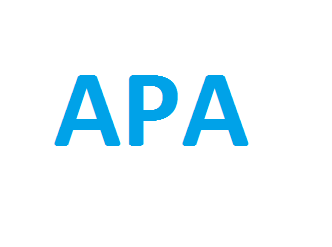
The Academic Perspective Procedia publishes Academic Platform symposiums papers as three volumes in a year. DOI number is given to all of our papers.
Publisher : Academic Perspective
Journal DOI : 10.33793/acperpro
Journal eISSN : 2667-5862
PI Sliding Mode Control using DQN for Boost Converter Control
Abstract
Nowadays, studies on reinforcement learning are increasing day by day. In this study, DQN algorithm, which is one of the reinforcement learning methods, was used in the control of DC boost converter used especially in power systems, fuel cells, hybrid electric vehicles, and battery technologies. In this direction, PI parameters of boost converter, which was previously controlled by PI Sliding Mode Control, were determined with DQN. As a result, the output voltage of the boost converter was tested with different voltage levels and its performance was evaluated according to the ISE index. As a result, it was seen that the output voltage at the output of the PI Sliding Mode supported DQN controlled boost converter produced better results than the conventional PI controller and followed the reference voltage better.
References
[1] K. Sundareswaran and V. T. Sreedevi, “Boost converter controller design using queen-bee-assisted GA,” IEEE Transactions on industrial electronics, vol. 56, no. 3, pp. 778–783, 2008.
[2] M. H. Rashid, Power Electronics circuits, devices, and applications. Dorling Kindersley, 2004.
[3] R. P. Borase, D. K. Maghade, S. Y. Sondkar, and S. N. Pawar, “A Review of PID Control, Tuning Methods and Applications,” Int J Dyn Control, vol. 9, pp. 818–827, 2021.
[4] M. Çimen, Z. Garip, and A. Boz, “Chaotic flower pollination algorithm based optimal PID controller design for a buck converter,” Analog Integr Circuits Signal Process, 2021.
[5] O. Güngör and H. İ. Yüksek, “Modeling of Boost and Cuk Converters and Comparison of Their Performance in MPPT,” Sigma Journal of Engineering and Natural Sciences, vol. 11, no. 1, pp. 83–101, 2020.
[6] M. Alkrunz and İ. Yazıcı, “Design of discrete time controllers for the DC-DC boost converter,” Sakarya University Journal of Science, vol. 20, no. 1, pp. 75–82, 2016.
[7] A. Sezen and K. Keskin, “Hybrid Control of DC-DC Buck Boost Converter,” Demiryolu Mühendisliği, vol. 14, pp. 99–109, 2021.
[8] S. Bououden, O. Hazil, S. Filali, and M. Chadli, “Modelling and model predictive control of a DC-DC Boost converter,” in In 2014 15th international conference on sciences and techniques of automatic control and computer engineering (STA), 2014, pp. 643–648.
[9] H. Guldemir, “Sliding mode control of DC-DC boost converter,” Journal of Applied Sciences, vol. 5, no. 3, pp. 588–592, 2005.
[10] M. E. Harmon and S. S. Harmon, “Reinforcement learning: A tutorial,” WL/AAFC, WPAFB Ohio, vol. 45433, pp. 237–285, 1996.
[11] M. E. , Çimen and Z. Garip, “Controlling a Single Tank Liquid Level System with Classical Control Methods and Reinforcement Learning Methods,” Kocaeli Journal of Science and Engineering, vol. 7, no. 1, pp. 30–41, 2024.
[12] A. Angiuli, J. P. Fouque, and M. Laurière, “Unified reinforcement Q-learning for mean field game and control problems,” Mathematics of Control, Signals, and Systems, vol. 34, no. 2, pp. 217–271, 2022.
[13] W. You, G. Yang, J. Chu, and C. Ju, “Deep reinforcement learning-based proportional–integral control for dual-active-bridge converter,” Neural Comput Appl, vol. 35, no. 24, pp. 17953–17966, 2023.
[14] M. E. Çimen, Z. Garip, Y. Yalçın, M. Kutlu, and A. F. Boz, “Self Adaptive Methods for Learning Rate Parameter of Q-Learning Algorithm,” Journal of Intelligent Systems: Theory and Applications, vol. 6, no. 2, pp. 191–198, 2023.
[15] D. Alfred, D. Czarkowski, and J. Teng, “Reinforcement Learning-Based Control of a Power Electronic Converter,” Mathematics, vol. 12, no. 5, p. 671, 2024.
[16] R. F. Muktiadji, M. A. Ramli, and A. H. Milyani, “Twin-Delayed Deep Deterministic Policy Gradient Algorithm to Control a Boost Converter in a DC Microgrid,” Electronics (Basel), vol. 13, no. 2, p. 433, 2024.





